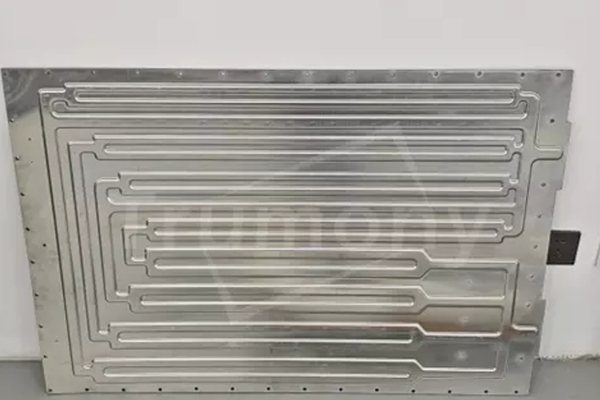From a structural perspective, liquid cooling plates are typically made from high-quality metals such as copper or aluminum. These materials are known for their excellent thermal conductivity, which allows for rapid heat transfer to the coolant. The cooling plate is designed with intricate flow channels inside. The layout and dimensions of these channels are carefully calculated to ensure even coolant distribution. The inlet and outlet of the channels are equipped with precise interfaces for connecting the coolant pipes, ensuring smooth coolant flow.
In terms of working principle, the liquid cooling plate transfers heat to the coolant through direct contact with the heat source. The coolant circulates within the flow channels, absorbing the heat and transporting it out of the system. The heat is then dissipated into the surrounding environment via the radiator. Compared to traditional air-cooling methods, liquid cooling offers higher heat dissipation efficiency, allowing the equipment to operate at lower temperatures. This not only extends the equipment’s lifespan but also enhances its overall performance.
Liquid cooling plates are widely used in various industries. In the computer sector, the growing demand for high-performance CPUs and GPUs has made efficient heat dissipation increasingly important. As a result, liquid cooling plates are commonly used in high-end computers, servers, and data centers, effectively managing heat and ensuring stable operation. In industrial applications, liquid cooling plates are used in large-scale machinery, such as CNC machine tools and power electronics, to maintain optimal operating conditions even under heavy load. Additionally, in the field of new energy vehicles, these plates play a crucial role in battery thermal management systems, ensuring that batteries maintain peak performance in varying environmental conditions.

